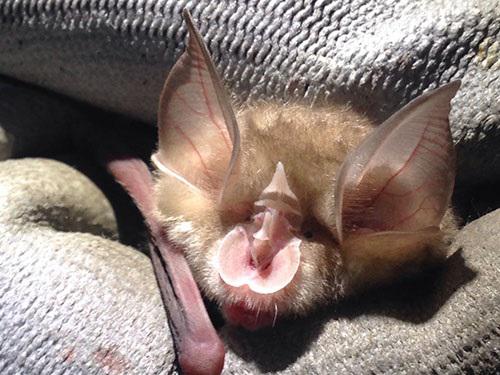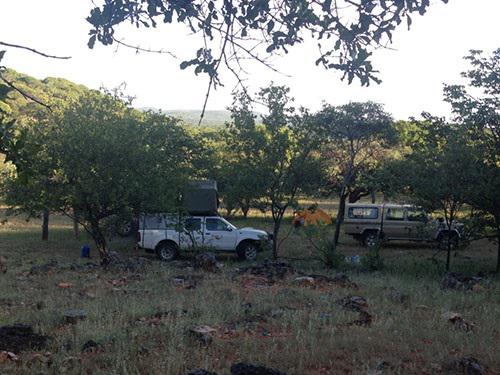Rachael Cooper-Bohannon
Other projects
10 Nov 2010
The Distribution and Conservation of Cave-Dwelling Bats in Southern and Central Africa
29 Nov 2011
The Distribution, Ecology and Conservation of Cave-Dwelling Bats in Southern Africa
To determine patterns of genetic diversity and inbreeding within populations and across species ranges and landscape barriers to gene flow of potentially threatened cave-dwelling bat species in southern Africa.

Rhinolophus denti. © Andrew Cooper.
As a group cave-dwelling bats are considered to be at high risk from anthropogenic impacts, wherever they occur (Jones et al. 2003; Kunz & Pierson 1994). Direct threats to cave-dwelling bats include: roost disturbance, guano mining, persecution and overharvesting. Additionally, as with biodiversity globally, bats are also threatened by landscape modifications and potential climate change impacts – particularly as southern Africa is an environmentally sensitive region.

Camp setup.
The IUCN considers genetic diversity a global conservation priority (McNelly et al. 1990). Unravelling the genetic population structure of these poorly studied species will provide information needed to inform the conservation status of little known cave-dwelling species (e.g. effective population size, patterns of gene flow, identify hotspots of genetic diversity, population viability (level of inbreeding and homozygosity) and identify isolated populations in need of conservation attention) that can be used as a model for other species.
This project will use an integrated approach to research the conservation requirements of focal species. The expected outcomes of this project will make a significant contribution to the knowledge and conservation assessment of cave-dwelling bats.
Outcomes will be achieved through the following objectives:
1. improve distribution data for these species by ground validating species distribution models;
2. develop microsatellite markers for the population genetics study; and
3. determine patterns of genetic diversity and inbreeding within populations and across species ranges and landscape barriers to gene flow.